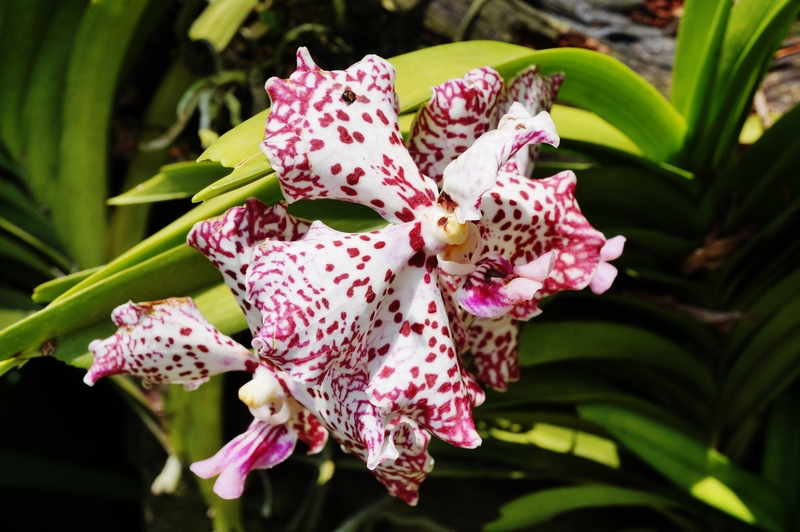Finding the Beginning of Your Garden Restoration
Posted on 20/09/2025
Finding the Beginning of Your Garden Restoration
There is a special kind of joy in restoring a neglected or overgrown garden. Whether it's an inherited backyard, a recently purchased property, or an outdoor space that's lost its luster, finding the beginning of your garden restoration can be both exhilarating and intimidating. Understanding where and how to start is crucial - and with a well-planned approach, even the wildest space can be gently nurtured back to its full glory.

Understanding the Importance of a Well-Planned Garden Restoration
Before you break out your tools or start pulling weeds, it's essential to fully grasp the purpose and value of garden restoration. This is more than just making your garden look prettier - it's about reviving ecosystems, enhancing your property's value, and creating a personal sanctuary.
- Improves ecological health by supporting pollinators and native species
- Reduces maintenance costs in the long run
- Boosts mental and physical well-being
- Raises your property value and aesthetic appeal
Restoring a garden is not just a weekend hobby. It's a transformative project that can affect your lifestyle, your home, and your local environment.
Assessing Your Garden: The First Step in Garden Restoration
Before making any sweeping changes, spend time closely evaluating your garden's current state. Thorough assessment is the foundation of every successful garden restoration project. Here's how you can get started:
1. Survey the Existing Landscape
Walk the entire area methodically. Observe and take notes on:
- The types of existing plants: Are there mature trees worth saving? Are there perennials hiding beneath weeds?
- The condition of soil: Is it compacted, dry, or rich with organic matter?
- Wildlife presence: Any signs of birds, bees, or helpful insects?
- Structures and hardscape: Fences, patios, paths, or raised beds - what needs repair or replacement?
Photograph your garden from different angles and even create a rough sketch, marking areas of particular interest.
2. Identify Problems and Potentials
Assessing is about noticing both problems and opportunities. Answer questions like:
- Where is the sunlight strongest? Which areas are shaded?
- Are there drainage issues, like pooling water after rain?
- What weeds, pests, or diseases are prevalent?
- Are there areas with hidden beauty - a charming stone bench or mature fruit trees?
By documenting these factors, you'll have a clear reference point as you begin the restoration journey.
Setting Goals and Priorities for Your Garden Restoration Project
With a clear understanding of your current garden, you can begin shaping a vision for its future. This is where garden restoration becomes personal.
Ask yourself:
- What do I want from this garden? (e.g., a quiet retreat, a space for children, a vegetable patch, wildlife habitat)
- How much time and resources can I dedicate to the restoration and ongoing maintenance?
- Do I want to preserve historic features or introduce new styles?
Setting these priorities prevents overwhelm and ensures you focus your efforts where they matter most. *Underline what truly matters to you and allow your goals to guide every step of your refurbishment*
Organizing the Restoration: Creating a Master Plan
1. Draw A Detailed Garden Plan
Using your earlier sketches and photographs, develop a more detailed blueprint. Include:
- Existing plants and structures to keep, move, or remove
- Areas for new flower beds, lawns, patios, or water features
- Paths, borders, and focal points
There are many free and paid apps and tools that can help visualize your dream space before any digging starts.
2. Set a Realistic Timeline and Budget
While every garden makeover is unique, most are multi-stage undertakings. Break down your master plan into manageable phases. Prioritize the most urgent tasks--like clearing unsafe structures or tackling invasive species--and give yourself ample time for each phase. Set a budget for materials, professional help, and contingencies.
Beginning the Restoration: Cleaning and Clearing the Garden
1. Clear Out Debris and Rubbish
Before planting or building, a thorough clean-up is essential in finding the beginning of your garden restoration. Remove:
- Broken furniture, rubbish, and old plant pots
- Fallen leaves, branches, and other organic debris
- Invasive weeds (using eco-friendly methods if possible)
This is a great opportunity to reuse or recycle where possible--repurpose old materials for new features or compost organic waste.
2. Prune, Cut Back, and Save What's Worth Saving
Not every overgrown shrub or tree needs removal. Often, a judicious prune can revive ancient roses or allow sunlight in. Identify any plants with potential and nurture them back to health.
3. Assess and Improve Soil Health
The foundation of any vibrant garden is its soil. Test your soil for pH, structure, and nutrients. Add compost, mulch, or organic fertilizer as needed to enrich the beds and borders. Healthy soil will make all subsequent restoration work far more effective.
Designing for Success: Choosing Plants and Features
Now that you have a blank slate, it's time to rethink your planting palette:
- Select native and climate-appropriate plants for ease of care and ecological benefits
- Mix perennials, shrubs, trees, and ground covers for year-round interest
- Consider adding layers of different heights and textures for a lush effect
- Plan for wildlife - nectar plants, berry bushes, and small ponds attract butterflies, bees, and birds
Feature highlights--such as a seating area, pathways, or a small pond--should reinforce both aesthetics and enjoyment, ensuring your restored garden is as usable as it is beautiful.
Restoring with Sustainability in Mind
Garden restoration isn't just about aesthetics; it's also a great chance to incorporate eco-friendly practices:
- Collect rainwater in barrels for irrigation
- Compost garden waste and kitchen scraps
- Minimize chemical pesticides and fertilizers in favor of natural alternatives
- Create habitats for native wildlife by leaving some logs, installing bug hotels, or planting wildflowers
A sustainable approach doesn't just restore your garden--it helps restore the local environment, too.
Maintenance: Ensuring Lasting Results
After all the hard work of rejuvenating your garden, ongoing care is what will sustain its newfound beauty. This includes:
- Regular weeding to prevent regrowth of invasives
- Mulching to conserve moisture and improve soil health
- Seasonal pruning and deadheading to encourage healthy growth
- Soil testing and amendment every few years
- Monitoring for pests and diseases and addressing issues early
Consistent care preserves your investment and delights both you and your visitors for years to come.
Transforming Challenges into Opportunities
Every garden restoration comes with its unique set of challenges - from pest infestations and poor soil to damaged hardscapes or tangled weeds. The key is to approach these obstacles as opportunities for creativity.
- Areas with too much shade? Consider creating a cool fern or hosta retreat.
- Poor drainage? Install a dry creek bed or rain garden.
- Too much lawn? Swap some for pollinator-friendly flower beds or edible landscaping.
Adapt your restoration plans to the environment and current conditions, rather than fighting against them. You'll create a garden that flows with nature instead of against it.

Learning and Growing: Resources for Further Inspiration
- Join online and local gardening groups to share tips and experiences
- Visit public gardens or historic sites for design ideas
- Consult books, blogs, or magazine articles about garden restoration projects in similar climates
- Take workshops on pruning, composting, or wildlife gardening
Learning from others and keeping up with seasonal advice can make your restoration journey both richer and more successful.
Your Garden Restoration Journey Begins Today
Starting your garden restoration project may seem daunting, but with a clear understanding of your garden's current state, a set of personal goals, and a thoughtful master plan, you'll be equipped to tackle even the wildest neglected plot. Remember that restoring a garden is a process--a series of small steps that, over time, deliver incredible transformations.
So, don your gardening gloves, grab your notepad, and step outside. The journey of finding the beginning of your garden restoration is as rewarding as the final result. Embrace the creative challenge, and soon you'll be enjoying a revitalized, vibrant oasis you can be proud of.
Quick Recap: Steps to Find the Beginning of Your Garden Restoration
- Assess the current state of your garden and document key features
- Set clear goals and priorities for restoration
- Create a detailed plan, timeline, and budget
- Start with cleaning and clearing out debris, weeds, and dead plants
- Revive and enhance healthy soil and select resilient, appropriate plants
- Incorporate sustainable practices for long-term results
- Maintain your garden regularly and adapt as it evolves
Begin today, and nurture not just your garden, but a lifelong passion for restoration and renewal!



